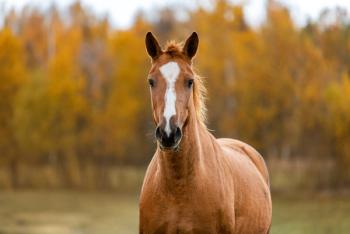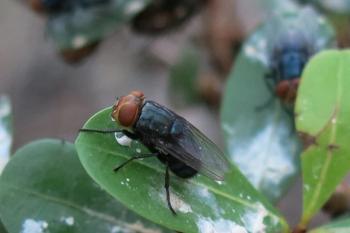
African horse sickness - preparing for 'what if'
Current risk in U.S. is low, but pathways are present, expert says.
Plum Island, N.Y. — African horse sickness virus (AHSV), known to be the most lethal infectious disease of horses with a mortality rate as high as 95 percent, is among several diseases for which the USDA's Animal and Plant Health Inspection Service (APHIS) is updating its emergency response plans for dealing with potential outbreaks.
The current AHS risk in this country is low, but because AHS and bluetongue (BT) disease in ruminants are carried by the same insect vector, William R. White, BVSc., MPH, senior staff veterinarian for APHIS at the Foreign Animal Disease Diagnostic Laboratory at Plum Island Animal Disease Center in New York, was asked last year to write and present a paper on the potential risk for these diseases in the United States.
The U.S. Animal Health Association (USAHA) requested the paper after the vector entered northern Europe from Africa in August 2006, initially causing more than 2,000 cases of bluetongue disease in the Netherlands, Belgium, Germany, France and Luxembourg. The virus overwintered in 2006-2007, the second mildest winter on record in northern Europe, and the epi-zoonic continued into 2007, resulting in 45,000 cases.
White's paper on the potential risk of AHS and BT in the United States was published in the April 2009 issue of Equine Disease Quarterly, a publication of the University of Kentucky's Gluck Equine Research Center, after which DVM Newsmagazine asked White to answer a few questions by e-mail. Here are the questions and his responses:
DVM: What is the current risk level in the United States from these diseases?
White: This paper did not attempt to quantify the risk of AHS to the United States, but only to identify potential pathways for entry and establishment. But one might conclude after reading the paper that pathways for introduction of the virus into this country exist, although the overall risk of this occurring is probably low at this time.
DVM: What is the status of the U.S. response plan?
White: APHIS has an emergency response plan for AHS that was written several years ago. AHS is now on a list of diseases for which a new response plan soon will be written. Among the issues to be addressed will be stockpiling of an emergency vaccine that would be used only in the event of an actual outbreak.
DVM: What was the impetus for your paper to be written and circulated at this time?
White: Our paper, recently published in Equine Disease Quarterly, was first presented at the USAHA meeting in Greensboro, N.C., last October. I was asked to write and present it in response to the alarming wave of bluetongue (BT) disease in ruminants spreading through Europe. Both BT and AHS are spread by the same insect vector, the Culicoides midge. If this midge could carry BT from Africa to Europe and cause serious outbreaks in ruminants there, the same midge might also eventually carry AHS to Europe. In fact, Europe is now preparing for this contingency by stockpiling AHS vaccines and elevating their alert status.
In the United States, we have a different but perfectly competent midge vector for AHS, Culicoides sonorensis. This same midge also transmits some strains of BT in parts of the country. The U.S. equine industry is thus concerned that AHS might cross from Africa in infected midges (or by another pathway) to infect U.S. midge and horse populations. Our equine industry and government regulatory agencies also are watching closely to see if AHS moves north from Africa to Europe to affect midge and equine populations there.
Our paper was thus a response to a request by the U.S. equine industry to identify potential pathways by which AHS might enter the United States from these locations, and if it were to do so, whether it could become established here. It was meant as a discussion paper upon which more thorough pathway and risk assessment studies might follow.
Newsletter
From exam room tips to practice management insights, get trusted veterinary news delivered straight to your inbox—subscribe to dvm360.




